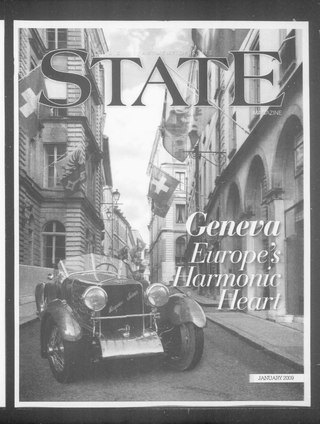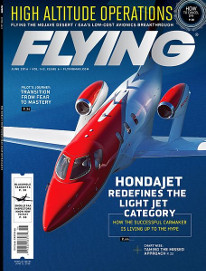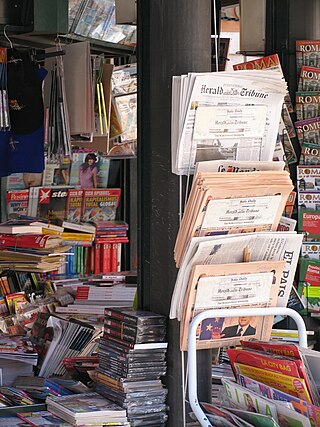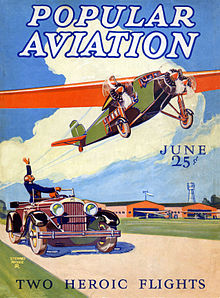
A magazine is a periodical publication, generally published on a regular schedule, containing a variety of content. They are generally financed by advertising, purchase price, prepaid subscriptions, or by a combination of the three.

Publishing is the activity of making information, literature, music, software, and other content available to the public for sale or for free. Traditionally, the term refers to the creation and distribution of printed works, such as books, comic books, newspapers, and magazines. With the advent of digital information systems, the scope has expanded to include digital publishing such as ebooks, digital magazines, websites, social media, music, and video game publishing.

The Financial Times (FT) is a British daily business newspaper printed in broadsheet and also published digitally that focuses on business and economic current affairs. Based in London, the paper is owned by a Japanese holding company, Nikkei, with core editorial offices across Britain, the United States and continental Europe. In July 2015, Pearson sold the publication to Nikkei for £844 million after owning it since 1957. In 2019, it reported one million paying subscriptions, three-quarters of which were digital subscriptions. The newspaper has a prominent focus on financial journalism and economic analysis rather than generalist reporting, drawing both criticism and acclaim. It sponsors an annual book award and publishes a "Person of the Year" feature.
The subscription business model is a business model in which a customer must pay a recurring price at regular intervals for access to a product or service. The model was pioneered by publishers of books and periodicals in the 17th century, and is now used by many businesses, websites and even pharmaceutical companies in partnership with the government.

Ziff Davis, Inc. is an American digital media and internet company. Founded in 1927 by William Bernard Ziff Sr. and Bernard George Davis, the company primarily owns technology- and health-oriented media websites, online shopping-related services, internet connectivity services, gaming and entertainment brands, and cybersecurity and martech tools. Previously, the company was predominantly a publisher of hobbyist magazines.

Discover is an American general audience science magazine launched in October 1980 by Time Inc. It has been owned by Kalmbach Publishing since 2010.
A trade association, also known as an industry trade group, business association, sector association or industry body, is an organization founded and funded by businesses that operate in a specific industry. An industry trade association participates in public relations activities such as advertising, education, publishing, lobbying, and political donations, but its focus is collaboration between companies. Associations may offer other services, such as producing conferences, setting industry standards, holding networking or charitable events, or offering classes or educational materials. Many associations are non-profit organizations governed by bylaws and directed by officers who are also members.. Many associations are non-profit organizations governed by bylaws and directed by officers who are also members..

The Calgary Herald is a daily newspaper published in Calgary, Alberta, Canada. Publication began in 1883 as The Calgary Herald, Mining and Ranche Advocate, and General Advertiser. It is owned by the Postmedia Network.
A weekly newspaper is a general-news or current affairs publication that is issued once or twice a week in a wide variety broadsheet, magazine, and digital formats. Similarly, a biweekly newspaper is published once every two weeks. Weekly newspapers tend to have smaller circulations than daily newspapers, and often cover smaller territories, such as one or more smaller towns, a rural county, or a few neighborhoods in a large city. Frequently, weeklies cover local news and engage in community journalism.
An online magazine is a magazine published on the Internet, through bulletin board systems and other forms of public computer networks. One of the first magazines to convert from a print magazine format to an online only magazine was the computer magazine Datamation. Some online magazines distributed through the World Wide Web call themselves webzines. An ezine is a more specialized term appropriately used for small magazines and newsletters distributed by any electronic method, for example, by email. Some social groups may use the terms cyberzine and hyperzine when referring to electronically distributed resources. Similarly, some online magazines may refer to themselves as "electronic magazines", "digital magazines", or "e-magazines" to reflect their readership demographics or to capture alternative terms and spellings in online searches.
Crain Communications Inc is an American multi-industry publishing conglomerate based in Detroit, Michigan, United States, with 13 non-US subsidiaries.
Mediaweek is an online trade website serving the Australian media industry. It provides news regarding the Australian newspaper, television, radio, magazine and outdoor advertising industries.

Flying, sometimes styled FLYING, is an aviation magazine published since 1927 and called Popular Aviation prior to 1942, as well as Aeronautics for a brief period. It is read by pilots, aircraft owners, aviation enthusiasts and aviation-oriented executives in business, commercial and general aviation markets worldwide.
MicroScope is a digital magazine and website for IT professionals within the ICT channel in the United Kingdom. Based in London, the magazine is owned by TechTarget; it formerly published as a weekly print magazine under Dennis Publishing Ltd and Reed Business Information for over 29 years. The last printed edition was published on Monday 28 March 2011, leaving only the online edition. The magazines prominent focus is news, analysis, and assessment of issues within the channel marketplace. It was available free to professionals who meet the circulation requirements with it being funded through revenue received from display and classified advertising. In the late 1990s, MicroScope remarked in its masthead “MicroScope – The No.1 news weekly for computer resellers and suppliers”.

A paywall is a method of restricting access to content, with a purchase or a paid subscription, especially news. Beginning in the mid-2010s, newspapers started implementing paywalls on their websites as a way to increase revenue after years of decline in paid print readership and advertising revenue, partly due to the use of ad blockers. In academics, research papers are often subject to a paywall and are available via academic libraries that subscribe.

Shonen Jump, officially stylized SHONEN JUMP and abbreviated SJ, was a shōnen manga anthology published in North America by Viz Media. It debuted in November 2002 with the first issue having a January 2003 cover date. Based on Shueisha's popular Japanese magazine Weekly Shōnen Jump, Shonen Jump is retooled for English readers and the American audience, including changing it from a weekly publication to a monthly one. It features serialized chapters from different manga series and articles on Japanese language and culture, as well as manga, anime, video games, and figurines. The premiere issue of Shonen Jump also introduced the first official English translations of One Piece, Yu-Gi-Oh!, and Naruto.

Billboard is an international music and entertainment magazine published weekly by Penske Media Corporation. The magazine provides music charts, news, video, opinion, reviews, events and styles related to the music industry. Its music charts include the Hot 100, the 200, and the Global 200, tracking the most popular albums and songs in various music genres. It also hosts events, owns a publishing firm and operates several television shows.

The decline of newspapers is an example and means of which to understand and observe the changing values of a culture. Whether newspapers are declining in popularity is region dependent. Data supports that in the U.S and Europe popularity and sales are wavering. In these regions, industry is facing slumping ad sales, the loss of much classified advertising, and precipitous drops in circulation. The U.S. saw the loss of an average of two newspapers per week between late 2019 and May 2022, leaving an estimated 70 million people in places that are already news deserts and areas that are in high risk of becoming so. Prior to that steep decline, newspapers' weekday circulation had fallen 7% and Sunday circulation 4% in the United States, their greatest declines since 2010. If the trend continues, a third of newspapers will be lost by 2025, according to a 2022 study published by Northwestern University.

A newspaper is a periodical publication containing written information about current events and is often typed in black ink with a white or gray background. Newspapers can cover a wide variety of fields such as politics, business, sports, art, and science. They often include materials such as opinion columns, weather forecasts, reviews of local services, obituaries, birth notices, crosswords, editorial cartoons, comic strips, and advice columns.
Act III Publishing was a company that published a number of trade magazines that covered the Media, Publishing, Music and Television Industries. The company was in business from 1985 to approximately 1991/92 when the various titles were sold to a variety of other publishers and the remaining titles were shut down. Act III Publishing was owned by the famous TV producer/writer Norman Lear who held a controlling interest through his company Act III Communications. The company was based in New York City.












